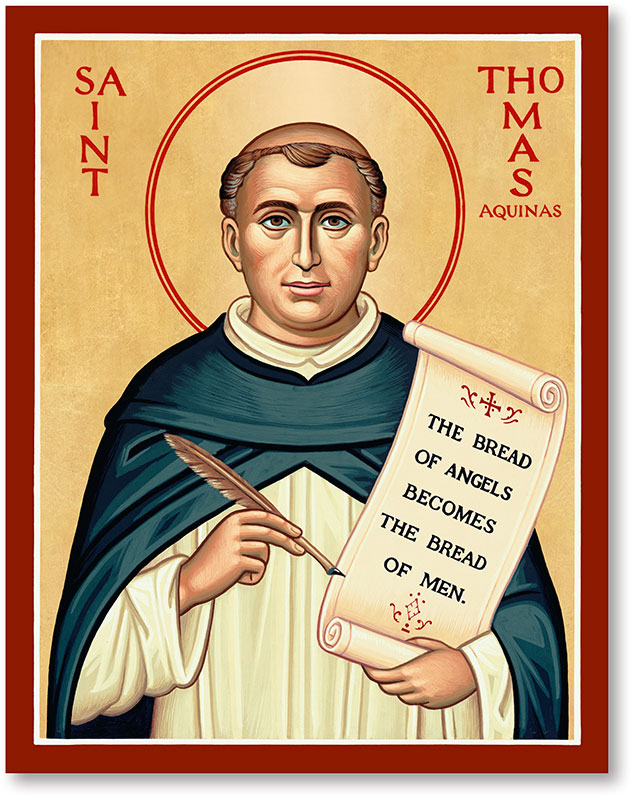“Unfortunately there can be no doubt that man is, on the whole, less good than he imagines himself or wants to be. Everyone carries a shadow, and the less it is embodied in the individual’s conscious life, the darker and denser it is.” –Carl G. Jung
Human beings are beautiful and complex creatures. Here we are, all of these little images of God, living our day-to-day lives. And in each image is a reflection of a God so incomprehensible and expansive, who still desires to be known.
Throughout history, we have used many tools to get to know ourselves. One perennially popular and insightful option is the Myers Briggs Type Indicator. Of course, personality and temperament tests only go so far. They strengthen and affirm us in our gifts, and expose parts of us we’d rather not face. On its own, the Myers Briggs is just another self-help tool that can bring down condemnation on ourselves and others. But for the Christian, it can be a stepping stone into an expansive life of prayer.
Prayer can do many things, but mostly I find prayer doing two things within me lately—humbling and astonishing me. I am beginning to grasp what Paul prayed for the saints in Ephesus: “I pray that you may have the power to comprehend, with all the saints, what is the breadth and length and height and depth, and to know the love of Christ that surpasses knowledge, so that you may be filled with all the fullness of God (Ephesians 3:18-20).” In my lack, I am brought to my knees in awe.
There is grace to know that we can learn about ourselves even through a human-created test like Myers Briggs. God says, ok sure, learn about all your nooks and crannies. Learn about all the places that light up within you and find the courage to dig around in the shadows and bring those places into the light. Because as we learn about ourselves and pat ourselves on the back for being so self aware, we’ll soon discover that there is another force at work in our shadows— namely, God. It is out of this gracious expansiveness we are invited to be fully known. In his book, Practice Resurrection: A Conversation in Growing Up in Christ, Eugene Peterson shares that a woman new to the faith and attending his church wisely observed, “Perhaps it takes a fool to savor the joy of shadow work, the shadow cast as I am attending to the unknown, the unpaid for, the freely given.”
We know that prayer is deeply personal, and there are many ways it can manifest depending on our individual temperaments. Using the Myers Briggs, let’s break them down a bit. With much credit to Chester P. Michael and Marie C. Norrisey in their book, Prayer and Temperament: Different Prayer Forms for Different Personality Types, let’s take a look at the four main temperaments and their spiritual prayer companions.
The Sensing/Judging temperaments and Ignatian prayer
The Sensing/Judging, (we’ll call them “SJs”), are the types who have Sensing and Judging as their dominant functions. They carry a deep sense of obligation and always want to be of good use. They are the “Guardian” type—traditional, comfortable with hierarchy and defined roles. They are good at defining boundaries, are street smart; charity and giving comes easily to them. They are good with law and order, have a strong respect for history and customs handed down from the past. They are usually suspicious of change, and excel in routine tasks as long as these tasks have value and meaning. They are usually the most conscientious of all the temperaments.
What’s more, according to David Kiersey’s book, Please Understand Me, “approximately 40% of the general (American) population are of the SJ temperament; and probably 50% or more of those who regularly attend church on Sunday are also of this temperament … The SJ person has a very strong sense of duty and obligation, whether it be to God or to fellow human beings. Therefore, SJs are usually the people who continue going to church even though religion may lose its appeal for the other three temperaments.” Because of their tendency to be overly loyal and remain functioning in systems for fear of change, their faith can grow dull and burnout is common.
This is where St. Ignatius of Loyola, the founder of the Jesuit order, can breathe fresh air into the SJ’s normal routine. Originating from a story of Ignatius breaking his leg in a battle at the Spanish town of Pamplona, 1521, he was wounded and a long recovery awaited him. It was during this time of disruption to his natural self, that he came up with his Spiritual Exercises as we know them today. At their core, these exercises aid us in remembering an event within the history of Scripture. Because of the SJ’s strong preference for commemoration, the Ignatian exercises can be very natural and honoring. But Michael and Norrisey are wise to remind us, “This commemoration, however, is more than a pious recalling of an event which occurred many years previously; for by immersion in its recollection the praying people relive, participate in, and in a symbolic way make real the past events … The sensible imagination is employed so that by reliving the event in an affective manner one can come to real sorrow, joy, or resolution of amendment.” Using all five of their senses, SJs can come alive by projecting themselves back into an original story just as they are today. The point is not to project themselves into the original characters, but to stay grounded in who they are and immerse themselves into a spiritually alive story that can bring new life and perspective into their present-day situation.
In addition to the Exercises being very sensory, they are also very structured and orderly. As Michael and Norrisey put it: “Altogether ten distinct points are given by Ignatius for each of the meditations.” They are:
- Choice of Topic
- Preparatory Prayer
- Composition of Place
- Petition for Special Grace Needed
- See and Reflect
- Listen and Reflect
- Consider and Reflect
- Draw Some Practical Fruit
- Colloquy with God the Father, Jesus Christ, and the Holy Spirit
- Closing with the “Our Father”
Example of Ignatian Prayer:
“(Luke 10:38-42) Imagine yourself a friend and fellow villager of either Mary, or Martha, or Lazarus. You happen to meet one of them in the village and you are told that Jesus of Nazareth is coming to visit in Bethany. You express an interest in meeting him, and you are invited to come the next evening to have dinner with them and Jesus. Close your eyes and try to relive in your imagination, with as many vivid details as you can, what your meeting and the ensuing conversation with Jesus would be like. Draw some practical fruit from it.”
–Michael and Norrisey
While this form of prayer may come easily to the SJs, for others, it might feel foreign and uncomfortable at first. And especially for the P (Perceiving) temperaments who are not drawn to order and structure naturally, the Ignatian Exercises can feel stifling and frustrating. So it is recommended that they feel free to change the order.
All of these forms of prayer are like learning a new language. If we’ve only ever related to God in a vocal and prescriptive way, these new languages can feel difficult. Give yourself grace. Go slow. God is not in a hurry. Especially for the SJ temperaments, the Ignatian Prayer can strengthen their shadows’ sides, namely their underdeveloped Intuitive and Perceiving temperaments. When these areas of our lives are not integrated, things like chronic stress, surprise and changes to the normal routine, other’s emotional expressions, and interpersonal conflict can set them off. An Ignatian prayer practice can bring awareness and balance into the life of an SJ. Over time, with the work of the Holy Spirit, they can have a tempered response to adversity, a healthier recognition of their own limits, a broadened perspective, clarified values, less need for harmony and a growing sense for intimate relationships.
The Intuitive/Feeling temperaments and Augustinian prayer
The NFs are the temperaments who have Intuition and Feeling as their dominant functions. They are commonly referred to as the “Idealists” and are always searching for meaning, inspiration, and authenticity. St. Augustine of Hippo’s life-long prayer of “My heart is restless until it rests in Thee” greatly resonates with NFs. The difficulty for them is that they are constantly becoming. They are never quite satisfied with the way things are and therefore never reach the ideal of “being.” They experience a great need for silence and solitude in order to know themselves and God. While only making up about 12% of the general population, “as much as half of the persons who make retreats, frequent Houses of Prayer, and write about prayer and spirituality will be of the NF temperament.” (Michael and Norrisey) And because Thinking and Sensing are their inferior functions, they make a special effort to pay attention to details, order, embodiment, and use of their senses. While Ignatian Prayer practices can be extra challenging for the NF, it can bring wholeness and health to their inferior Thinking and Sensing temperaments.
Situations that can easily lead to burnout for NFs are excessive extraverting and attention to fact and details, chronic physical exhaustion, negativity and excessive criticism, and fear of eventual or actual loss and separation. The use of symbols, music, poetry, and other various forms of art can help the NF’s inexhaustible need to “always read between the lines in order to catch the inexpressible, the spiritual, and the hidden meaning.”
While Ignatian prayer is one of projection, Augustinian prayer is one of transposition. Rather than project into the past, the person praying transposes the meaning of the Scripture passage into their everyday life context. Out of all the other temperaments, the NFs are the ones who desire more time in prayer and meditation. Sometimes it can feel insatiable, and when they have gone a while without any times of prayer, they can feel dry, disoriented, apathetic, and reactive.
Drawing from the wisdom passed down from the Biblical writers, Augustinian prayer thrives with the NF’s creative imagination and Intuitive function. They excel in the area of using prayer as an interpersonal and relational conversation. Of course, “such openness to the Holy Spirit involves a certain amount of risk and experimentation which should always be subject to continued discernment.” This is where journaling and writing are natural outflows for the NF. They would agree with Cardinal Newman who once said, “I pray best at the point of a pen.”
Example of Augustian prayer:
“Take the prayer in Ephesians 3:14-21 and change the pronouns from the second person (you) to the first person (me). Write out the new prayer so that it is a prayer for yourself. Then read it aloud several times. Recite it slowly; put as much meaning into the words as you can. Try to savor every word and phrase. What changes in your present attitudes does this prayer suggest to you?” –Michael & Norrisey
Sensing/Perceiving temperaments and Franciscan prayer
Moving on, the SPs are the types that have Sensing and Perceiving as their dominant function. According to Michael and Norrisey, they “love action and become easily bored with the status quo. They are crisis-oriented, good at unsnarling messes, and able to get things moving. They make good trouble-shooters, negotiators, and diplomats. They have unlimited energy as long as the crisis exists and work best and most efficiently when it is necessary to respond quickly and dramatically. They are flexible, easy to get along with, open-minded, adaptable, willing to change their position. They are good as conciliators since in their view almost everything is negotiable.”
Some difficult situations that can easily lead to burn out for the SP are environments with excessive expression of emotions, too much focus on the future, limited options, and insensitivity to needs. In order to bring wholeness to themselves, they need awareness and understanding and discipline. This is where Ignatian, Augustinian and Thomistic forms of prayer can help bring integration with their shadow sides. But they take to Franciscan Spirituality like a duck to water.
Rooted in an openness to the Holy Spirit and seeing God through all five of our senses, Franciscan prayer originated in the 13th century with St. Francis of Assisi. What particularly makes this form of prayer “SP” is its willingness to also go where the Spirit leads. SPs are naturally spontaneous, optimistic, and love finding the good and beautiful aspects of God everywhere—primarily creation.
Prior to the Reformation, there was no printing press, and a 94 – 96% illiteracy rate. Instead of the Bible being the primary form of communing with God, creation and the sacramental life of the church were the most common means. Thirteenth century Fransiscans were an Agrarian society and every written copy of a Bible was just that—written; slowly and rare, passed down from the monks in monasteries. SPs are the one temperament that is least found in today’s churches. Seeing as most of our American church systems are very structured and erring on the rationalistic side. If SPs are found in church, it is usually a charismatic form.
If there is one sentence that sums up the prayer life of an SP, it is that their work is their prayer. They have a natural outflow of charity and good works, but can easily get burnt out over a long period of time if there is no value found in the work. This is why a Franciscan form of prayer can help the person reorient their heart in God and their daily life.
Example of Franciscan prayer:
“Think of the person that you least like of all your acquaintances. Try to see something of God’s goodness, love, life, truth, beauty in that person. What might you do to foster and increase the presence of God in that person? Prayer is always a way to help another.” –Michael & Norrisey
Intuitive/Thinking temperaments and Thomistic prayer
Finally we have come to the NT temperament. These are the people who have Intuition and Thinking as their dominant functions. The last four centuries have enjoyed a heyday where these temperaments have excelled. They are “highly intellectual, speculative, rational” people. Even though they make up about 12% of the general population, they are frequently found in positions of leadership. Usually, we will find them using their skills in areas of architecture, law, planning, and general consulting. They are very future oriented, regarding the “past as dead and gone.” What matters most to the NT is what could be. They have a great thirst for truth and “for the freedom that flows from a knowledge of the truth.” They tend to be highly perfectionistic and deeply critical of oneself. This deep internal criticism can be paralyzing and create distance in their relationships. Because Feeling is an inferior function for them, they can come across as impersonal and hard to read. They are usually oblivious to others’ emotions, yet have a strong desire for personal connection. Participating in larger groups and liturgical celebrations can help the NT grow in their emotional awareness.
The reason why Thomas Aquinas has been recommended for the NT temperament is because of his use of the Scholastic Method of thinking which was popularized by him and his followers. His approach to prayer was very similar to scientific methods of his day. To the other three temperament types, this form of prayer will not feel like prayer at all. It will feel more like a study, impersonal and requiring a lot of mental energy. So it’s important to remember all of these forms of prayer are a gift. Because they are rooted in a loving relationship with God who has so graciously given us so many ways to communicate with Him. Sometimes it is the opposite form of prayer that is most unlike our nature that is the greatest gift.
For the NT, they “recognize it takes much time and effort to investigate the causes behind one’s lack of self discipline and to take the necessary steps to attain the sought virtue. Therefore, an NT will set goals for themselves and will systematically proceed with them. Every fiber of the mind will be challenged to attain the self-discipline to conquer laziness, pride, and selfishness, and to center one’s life in God and in loving service to others.”
Signs of burnout for the NT include: overindulgence in the senses, paranoia and an adversarial attitude toward the world, outbursts of emotion and a fear of being irrational.
Example of Thomistic Prayer
(Matthew 5:20-26 and John 2:13-17)
“What is the difference between the anger of Jesus and the anger which Jesus condemns in this passage from Matthew? Why is anger so wrong that Jesus equates it with the command against killing? St. Thomas defines anger as the desire to violently attack anyone who poses a threat to something we consider valuable. What about the self-defense of our country, our family, ourselves? How far are we justified to go to defend ourselves? Is the anger you sometimes feel a justifiable anger, similar to that of Jesus, or the kind of anger Jesus condemns in the Sermon on the Mount? What does one do about one’s anger?” –Michael & Norrisey
***
Oftentimes, distorted versions of these prayers have been passed down. We’ve all had negative experiences in trying something new. But I think where the damage gets done is when fanaticism and legalism take root. There is grace in being ok with the tension it requires to hold all these forms of prayer developed over the past twenty centuries as equal and valuable.
You may have guessed by now what type I am. Here I am, an NF, writing to you about prayer. I can’t help it. Honestly, it wasn’t until I started writing that my prayer life opened up. I was raised in a very NT/Thomistic way of relating to God and He always felt so far away from me. My times of prayer usually ended with feelings of desolation and like something was wrong with me. It’s been through writing and reading poetry that Scripture has opened up to me once again. Becoming more aware of the kind of person God has made me and is transforming me to be, allows me to be content in the journey. And it gives me the freedom to see others with grace. Here in the shadowlands, where our outbursts and shadows get the best of us and our denials of knowing Jesus blindside us, it is here that we are transformed by the things we cannot control.







